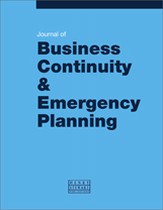Crisis decision making: Lessons from a SWAT team
Abstract
Operating in environments with catastrophic downside risk requires the application of decision-making processes that differ from those applied in situations with more symmetrical risk-to-reward ratios. Using a case study of a SWAT team deployed for a manhunt of an armed gunman who had shot numerous people including a police officer, this paper explores how to avoid excessive information gathering by applying a bias for action and limiting variables. The paper also discusses the danger in attenuating the aggressiveness of action as a means to mitigate risk. Instead, the author argues that decision makers should distinguish between the questions of if they should do something rather than how they should do something. By defining decision gates to separate these questions, decision makers will be better equipped to differentiate uncertainty from indecision. Finally, the paper looks at the difference between strategies that prioritise efficiency over effectiveness and recommends assessments of decision-making processes rather than just outcomes when reviewing critical incident response.
The full article is available to subscribers to the journal.
Author's Biography
Kevin Cyr is the Officer in Charge of the Royal Canadian Mounted Police Lower Mainland District Integrated Emergency Response Team. Inspector Cyr has a master’s in criminal law from Osgoode Hall Law School and his work has been has published in various international law and criminology journals. He is an adjunct criminology instructor at the University of Fraser Valley and teaches risk management, law and critical incident command at the Canadian Police College.
Citation
Cyr, Kevin (2022, December 15). Crisis decision making: Lessons from a SWAT team. In the Journal of Business Continuity & Emergency Planning, Volume 16, Issue 2. https://doi.org/10.69554/VORE4147.Publications LLP
